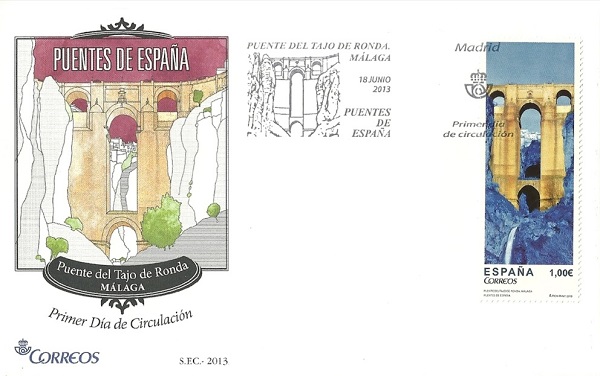The Puente del Tajo, also known as Puente Nuevo, is the most
characteristic monument of Ronda (Malaga). It was built between 1751
and 1793 over a 100 meters deep chasm made by the Guadalevin river. Its
huge pillars settle deep into the gorge supporting a first central arch
at the bottom which holds a much higher second one reinforced by
buttresses. The work is completed with two lateral arches grounded on
the rock. Parts of the span column interiors were used as a prison and
now house an interpretation centre. It connects the old and the modern
neighbourhoods of Ronda.
The bridge was built with blocks of stone from the river gorge and it is considered a masterpiece. The building works lasted over 40 years and were conducted by several architects though Jose Martin Aldehuela was the key figure who also built the Ronda bull fighting ring. Both buildings are symbols of the city.
The bridge was built with blocks of stone from the river gorge and it is considered a masterpiece. The building works lasted over 40 years and were conducted by several architects though Jose Martin Aldehuela was the key figure who also built the Ronda bull fighting ring. Both buildings are symbols of the city.
The Puente de Piedra in Logrono was built by Fermin Manso de Zuniga. It opened in June 1884 and is 198 meters long. It has seven arches standing on cylindrical pillars to span the bulk of the Ebro river. On the same location there stood a former bridge believed to have been built by San Juan de Ortega, which is why the current one is also known as Bridge of San Juan de Ortega. Due to landslides and heavy flooding, the original bridge was rebuilt several times until it was finally decided to build a new one on the remains of the old one. In 1917 the width of the Puente de Piedra was expanded with the construction on both sides of concrete pedestrian sidewalks, allowing for an increase in traffic.
Stamp Issue: 2013.06.18


No comments:
Post a Comment